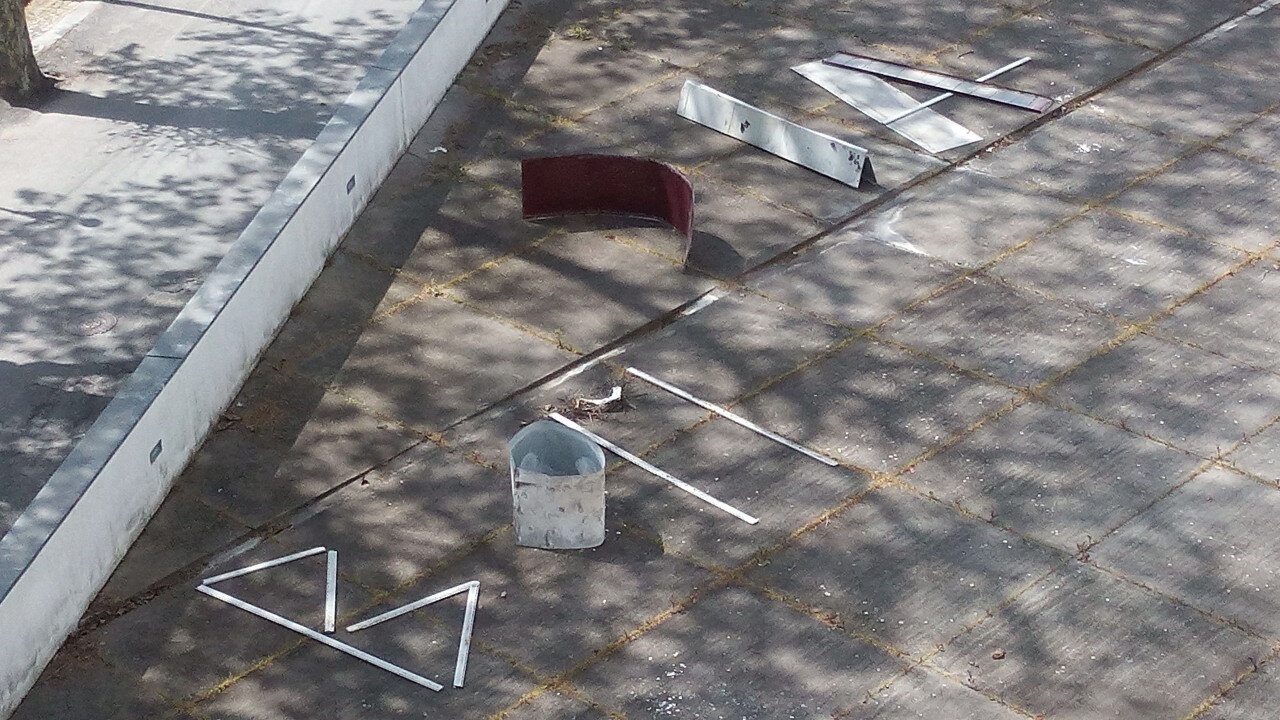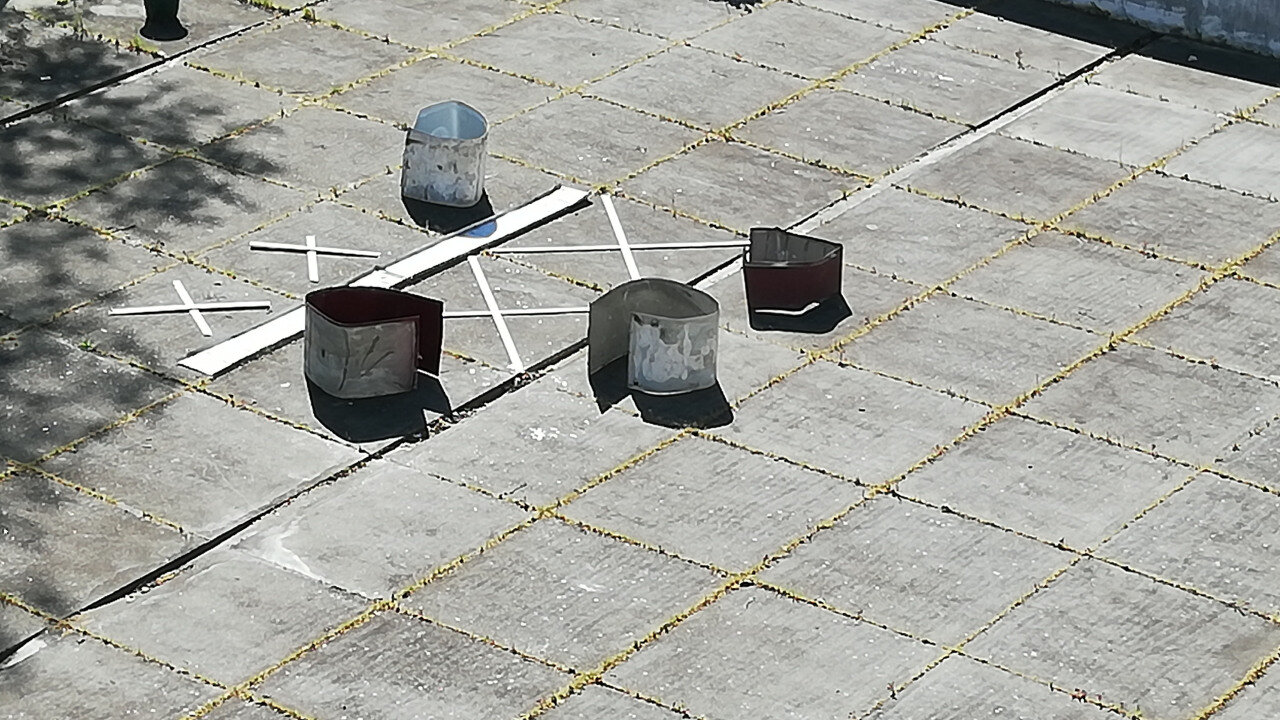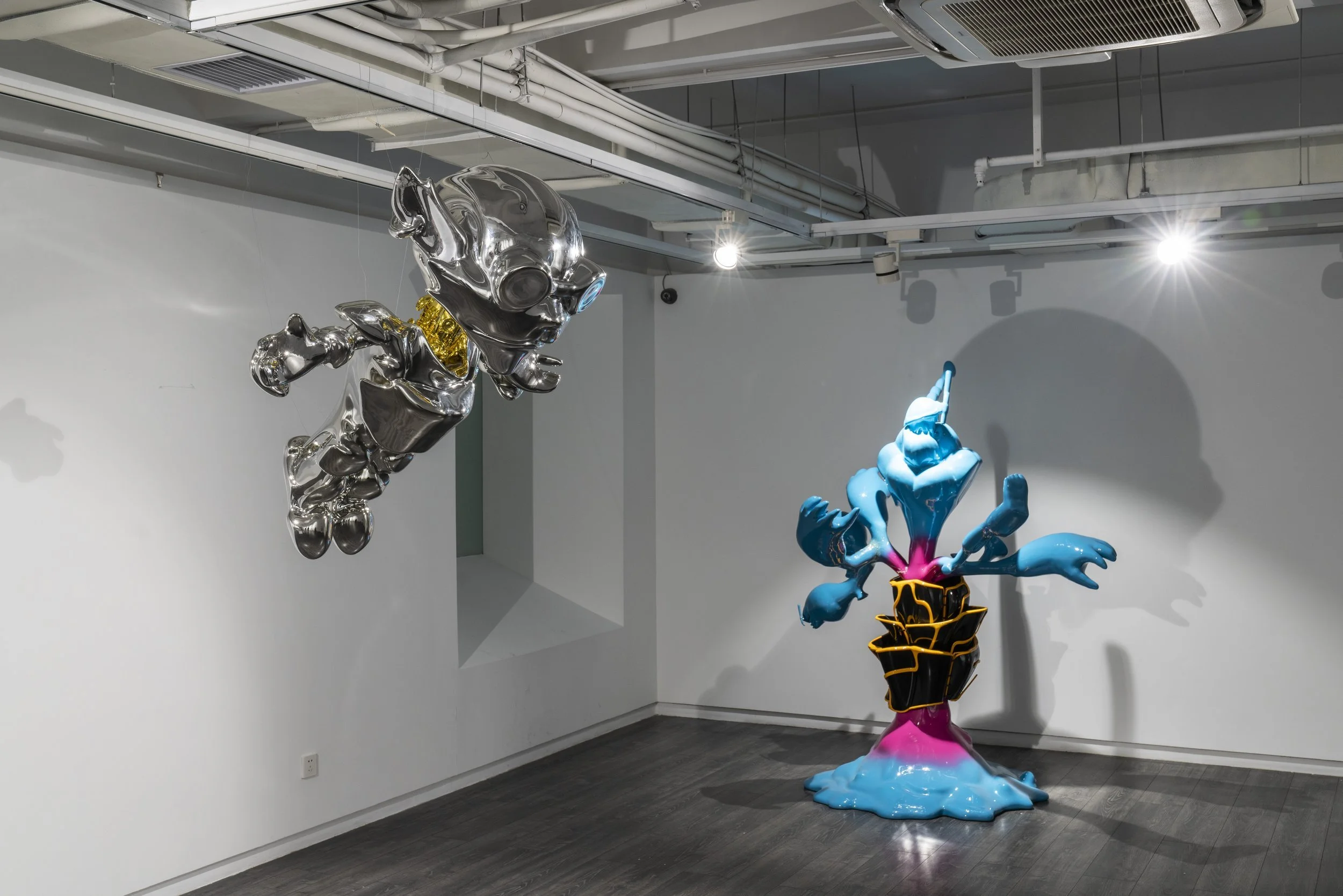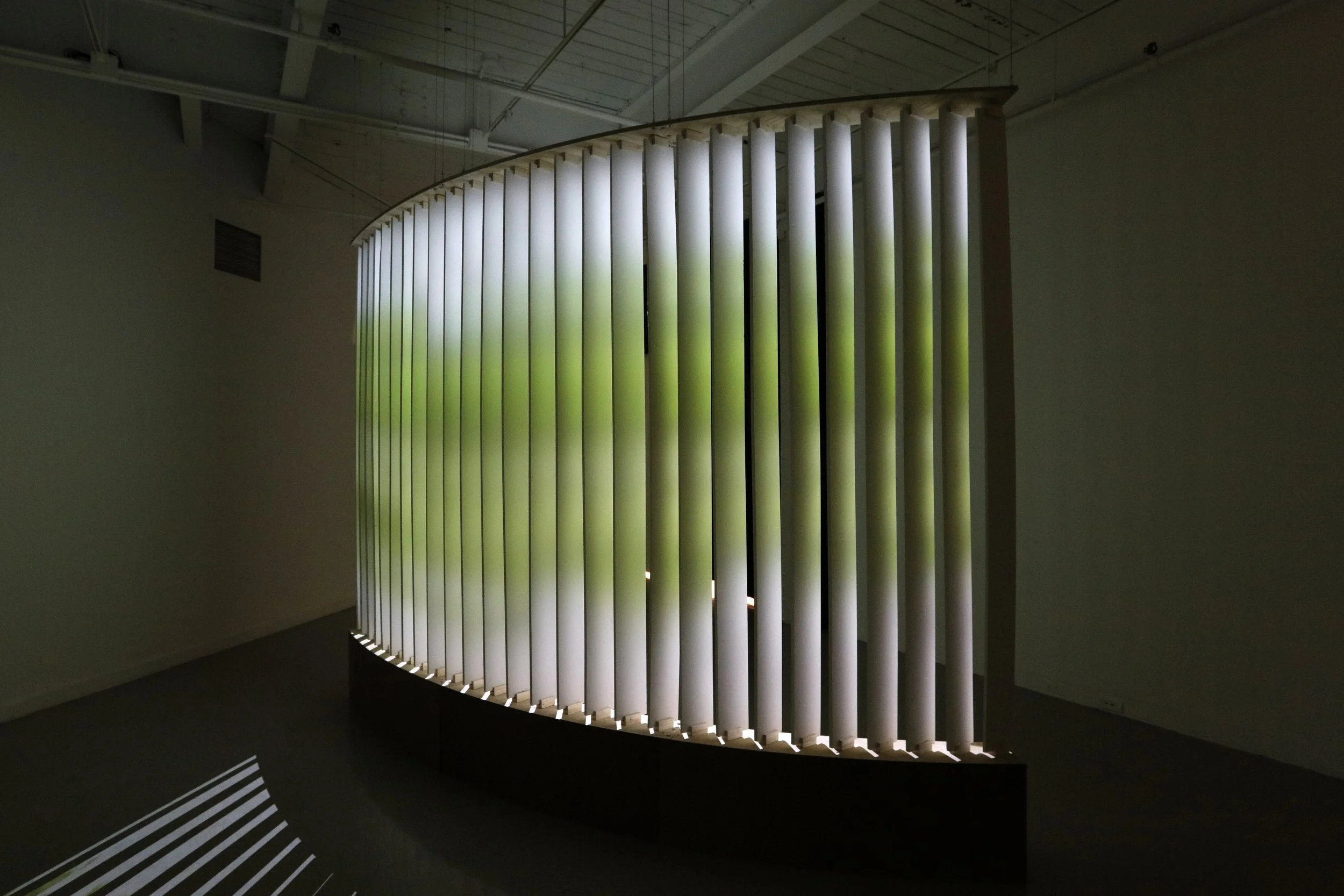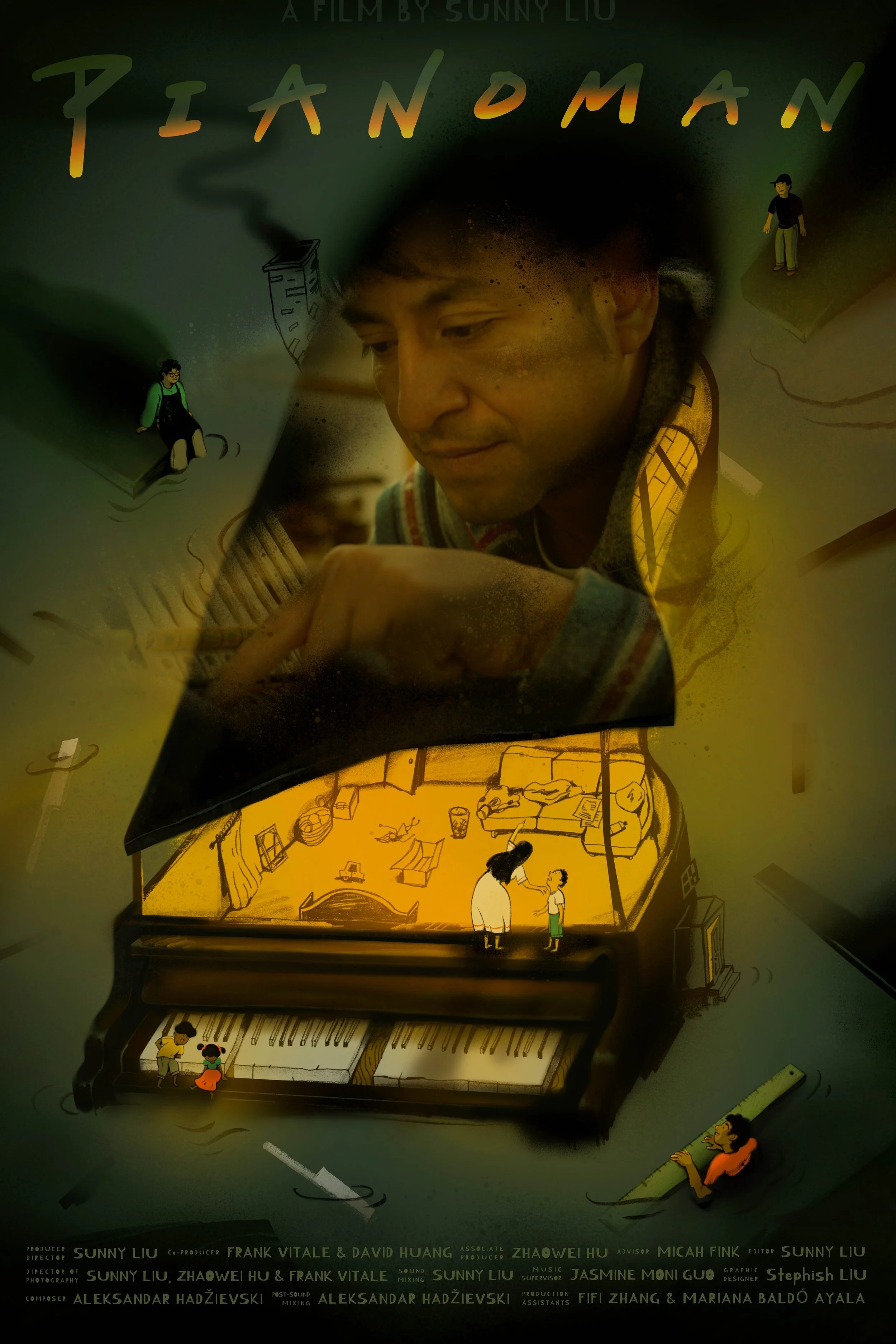10 Questions with Rosinda Casais
Rosinda Casais was born in Póvoa de Varzim, Portugal, in 1981. She graduated in architecture in 2006, at Faculdade de Arquitetura da Universidade do Porto. In 2008, she graduated in Metodologias de Intervenção no Património Arquitetónico at the same faculty. Throughout her career, she collaborated with different teams of architects, Atelier Peter Zumthor, Vinagre & Côrte-Real, Immopo and as a freelancer.
In recent years, she has tried to combine architecture with sculpture. At the moment, she collaborates with Fahr 021.3 and studies sculpture at Faculdade de Belas Artes da Universidade do Porto.
Artist’s profile
Matéria Disponível | DESCRIPTION
"Matéria Disponível" began during the Covid-19 lockdown, arising from the need to share quality time outdoors between mother and daughter. It evolved into a representation of imaginary journeys shared with neighbors in the same building.
During this period, streets were deserted, and people were confined to their homes. The limited connection to the outside world came from the media, dominated by updates on Sars-Cov-2 infections and their global spread.
The project utilized remnants from the building's facade where the two live, hidden beneath one of the balconies. Photographic documentation of various visual communications occurred on the building's common terrace. The creation of the words 'dia' (day) and 'bom' (good) at the outset elicited enthusiastic responses, setting a positive tone for the project. Games of 'noughts and crosses' and exploration of 'means of transport' filled many mornings and afternoons. The installations remained until night, seeking to spark curiosity and foster connections among residents.
The project addresses themes such as isolation, communication, and the exploration of imagery materials within confined spaces.
Color photographs, created using remnants of the building's facade in the courtyard, were layered onto black and white negative images sourced from media photographs captured by 'Euronews' on the same day. The inclusion of these media images introduced a temporal and shared memory dimension to the work. The final compositions contrast individual responses to solitude, observed in the courtyard sharing, with the global context that triggered it. Consequently, they suggest a crossing and interconnectedness of experiences. The collective memory enhances the understanding of these images, encouraging individuals to associate them with their own lived moments.
INTERVIEW
Could you tell us a little more about your background? How did you start making art?
I always loved working with different materials and creating different compositions from them. During my architecture degree, I always worked a lot with models to easily visualize the context, the idea, the organization. Then, I met Peter Zumthor, I was his student in Mendrísio, and later, I worked in his studio for a while. It was an incredible experience, but above all, it was an opportunity for me to really do what I like the most: work with the materials and explore their potential. In Portugal, it wasn't easy to reconcile architecture with my sculptural side. At 34, after motherhood, I decided to pursue what I considered to be my vocation and enrolled in the sculpture course. Today, I continue this work of trying to find a compromise between architecture and sculpture.
What is your personal aim as an artist?
I feel that I have a duty to add value to things, in the sense of valuing what already exists. I like to work with sites, understand what makes sense therewith, add or remove, and compose with objects to create confrontations to attract attention. I am above all passionate about the plasticity of materials, their time, wear and tear, the different layers that they acquire.
Wasted materials are a recurring concept in your work. You seem to be interested in their history as much as in their look. How important is personal history to you and your art?
Normally, individual or personal history does not motivate me as much as collective history. I am a very reserved person, and I like to work above all with ideas and feelings.
How do you choose the materials you work with?
The choice of materials depends on what I intend to do or what I have available at each moment, as was the case with 'Matéria Disponível'. I like consistency, and I try to reinforce the message clearly and, preferably, poetic way.
In your recent project Matéria Disponível, you question the connections between people and their surroundings, and you investigate the importance of community. Do you feel the recent pandemic has shifted our perception of our surroundings? And if so, in what way?
Yes, the surroundings are no longer neighborhood. Smiles are no longer seen, good morning wishes became residual, correct has taken new definitions, distance seems to be the greatest shift. People have acquired new spots of emptiness, new limits, and limitations, which contrasts with what surrounds us when we live in a city. Cities are neighbors; they are contacted, they are contagion, they are contamination—everything we have to avoid at this point. So, cities and urban environments don't even seem to make sense these days.
You worked on this project during the Covid-19 pandemic; how much did it influence your work?
Covid-19 was the reason for this work in every way. With the virus, there was a need to stay at home and make this stay more fun and feasible. Then there was the fact that there was some waste in the yard with a certain dimension that allowed me to communicate with the neighborhood and the idea of adding a message to those moments.
What was the most challenging part of your project?
Making these objects more than just an image and allowing me to really imagine a trip. For my 5-year-old daughter, it was very easy but definitely not for me.
What do you hope that the public takes away from your work?
I want people to value what exists and especially what they already have. The old and the worn are just a feature, not a defect.
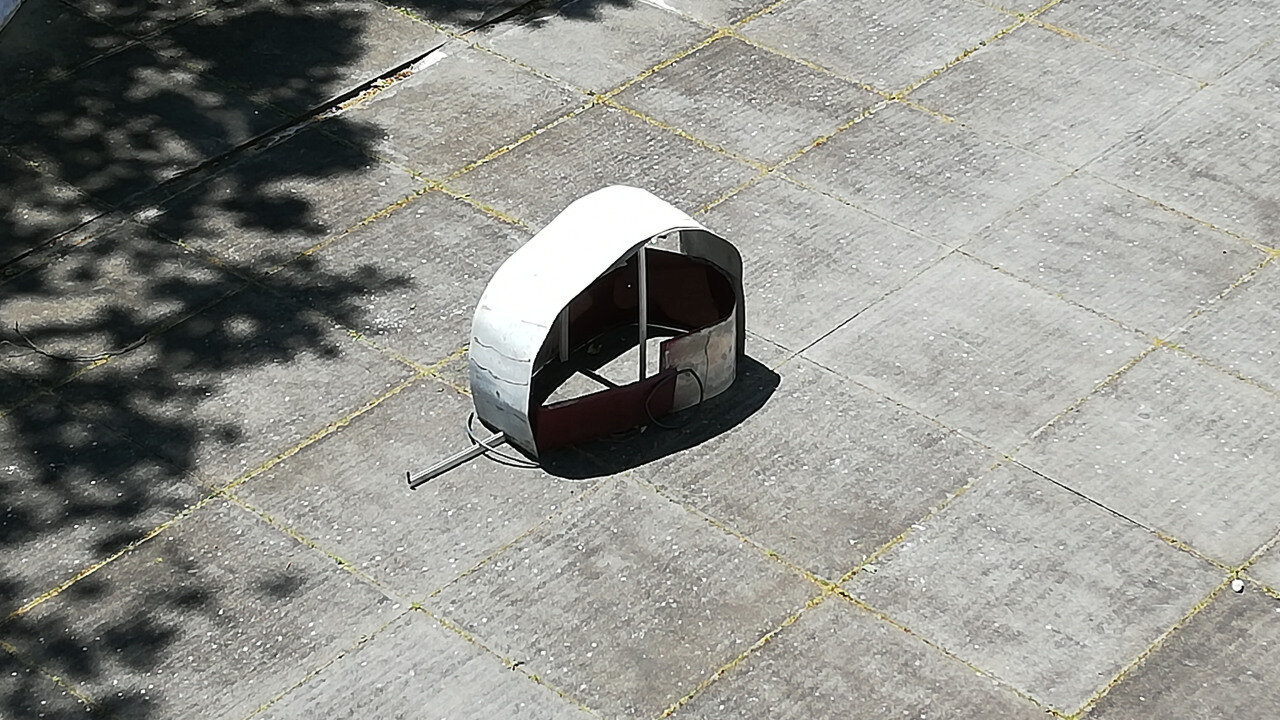
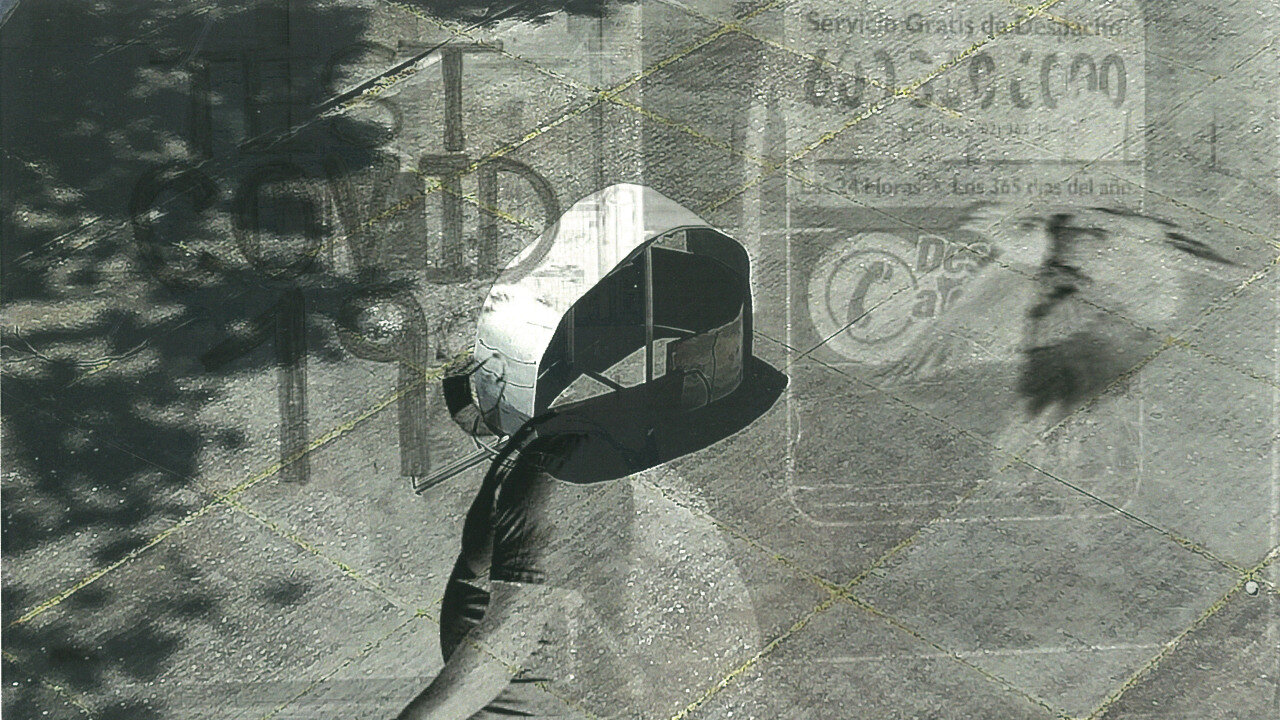
What are you working on now, and what are your plans for the future?
I am working on a few pieces simultaneously, but the one I developed the most is a piece that explores the sound division in physical, formal, and material terms. A division decreases the importance; existence ends up fading. Sound is also associated with this idea of finitude since its physical existence is limited to the instant. With or without reproduction or repetition, it is always brief. It only exists there and at that moment. On the other hand, the more divided a sound is, the less noticeable it becomes. So I am building a set of sound pieces that divide the sound transmission into different numbers of rooms until the sound just stops being felt.
And lastly, what do you hope the future holds for you and the world?
Passion. I think passion is humanity's strongest weapon. More than love is the passion that makes us cry, laugh, and fight with conviction. I think that's what the world needs, too, passion for facing all the behavioral changes we need to make.




